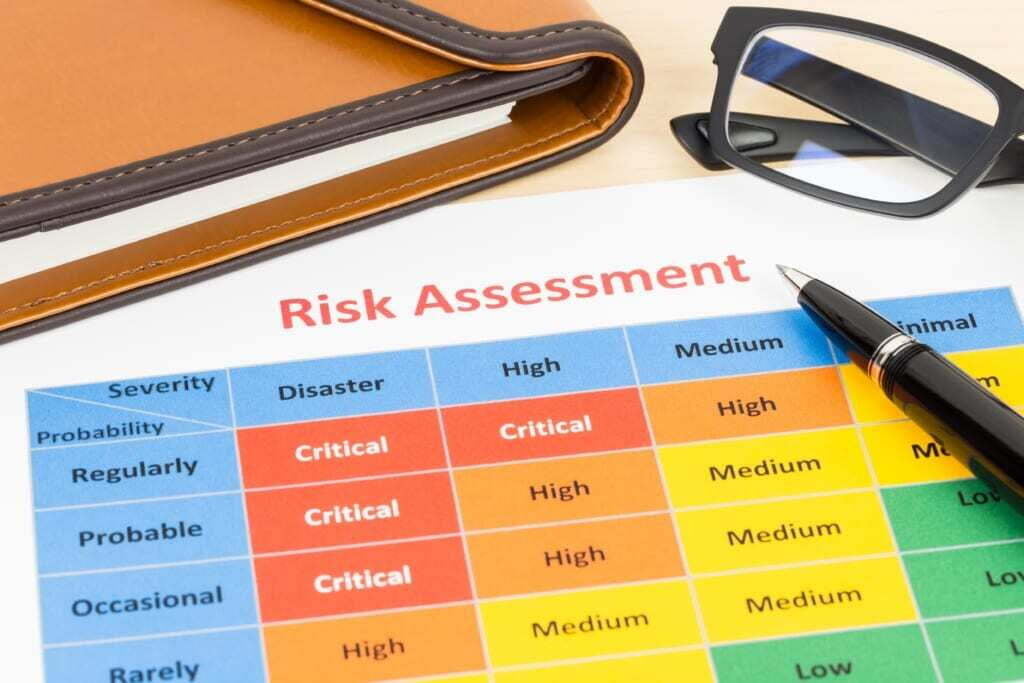
IT risk profiling is a critical first step in strengthening security
What is Risk Profiling Why do we need it?
Every successful information security program requires an assessment of existing systems and new IT risk management processes being implemented. It is beneficial to question the security posture of any new software application and review it for possible vulnerabilities before full implementation. Reassessing and validating IT systems and assets as new compliance standards or regulatory measures surface can also be a valuable exercise. All of these are part of an effective IT risk management program.
Risk Profiling Principles
1. the risk analysis must consider the needs of all stakeholders who may be affected by the risk.
2. the risk must be reduced to a level deemed acceptable by regulators and potentially interested parties
3. the burden of safeguards must not exceed the threat they justify to themselves.
Risk Assessment Practice
1. the risk analysis considers the likelihood that such risks will have a significant impact
2. the same criteria are used to assess risks and safeguards so that they are comparable
3. impact and feasibility ratings have a qualitative aspect, designating interested parties, regulators and review bodies in a concise manner.
4. impact and feasibility ratings are calculated from comparing the values of all assessed risks, precautions and risk acceptance requirements.
5. The definition of impact ensures that the degree of harm to one group is equivalent to the degree of harm to other groups.
6. The definition of impact should clearly limit the dimensions that are appropriate for all parties and those that are not.
7. the definition of impact address; the mission or utility of the organization to clarify whether the organization and others are involved in the risk, the self-interest concerns of the organization, and the obligation of the organization to protect others from harm.
8. risk analysis depends on the quality of care in order to analyze existing controls and recommended protective measures.
9. Risks are assessed by subject matter experts who use data to identify threats and preventive measures.
10. Risk assessment does not measure all possible risks. Over time, in order to define and address further threats, the risk assessment needs to be repeated.

Two approaches to IT risk assessment
Quantitative IT Risk Assessment
Qualitative IT Risk Assessment
Quantitative IT Risk Assessment
A quantitative assessment uses monetary amounts to measure risk. It uses a mathematical formula to provide you with the expected loss value associated with a specific risk based on
- The value of the asset
- Frequency of occurrence of the risk
- The probability of the associated loss
In the example of a server failure, the quantitative assessment would involve looking at
- The cost of the server or the revenue it generates
- How often the server crashes
- The estimated loss incurred per crash
Based on these values, you can perform several key calculations.
- Single loss expectation - the cost you would incur if the event occurred once
- Annual incidence - how many times you expect this risk to occur each year
- Annual loss expectancy - the total value of risk over the course of a year
Find a formula to calculate annualized expected losses.
These monetary results can help you avoid spending too much time and money to reduce negligible risk. For example, if a threat is unlikely to occur or has low or no remediation costs, then it may pose a low risk to your business.
However, if a threat to your critical IT systems is likely to occur and remediation costs may be high or may adversely affect your business, then you should consider it a high risk.
You may want to use this risk information to perform a cost/benefit analysis to determine what level of investment would make risk treatment worthwhile.
Keep in mind that quantitative measures of risk are only meaningful if you have good data. You may not always have the necessary historical data to calculate probabilities and cost estimates for IT-related risks, as they can change very quickly.
Qualitative IT Risk Assessment
Qualitative risk assessment is opinion-based. It relies on judgment to categorize risks based on probability and impact, and uses a rating scale to describe risks as
- Low - Unlikely to occur or affect your business
- Moderate - likely to occur and impact
- High - Likely to occur and significantly impact your business
For example, you might classify something as "high probability" that you expect to happen several times a year. You can do the same for cost/impact in any term that seems useful, e.g.
- Low - will result in a maximum of half an hour of lost production time
- Medium - will result in a complete shutdown for at least three days
- High - will cause irreparable damage to the business
After determining your rating, you can create a risk assessment matrix to help you classify the risk level of each risk event. This ultimately helps you decide which risks to mitigate using control measures and which risks to accept or transfer.
Using Different Types of Information in IT Risk Assessments
It is often best to use a mixed-method approach to IT risk assessment, combining elements of quantitative and qualitative analysis.
You can use quantitative data to assess asset values and expected losses, and also engage people in your organization to gain their expert insight. This may take time and effort, but it also provides a better understanding of risk and better data than each method would provide individually.
Brocent offers a wide range of Risk Profiler software and professional services
Brocent offers a wide range of Risk Profiler software and professional services
The following software:

The organization ensures that risk mitigation meets the needs of all parties inside and outside the company, and confirms their rational decisions to regulators and judges by using the same parameters to manage risks and their recommended precautions.

Simple IT risk assessment software helps implement cybersecurity policies through automated security account configuration
